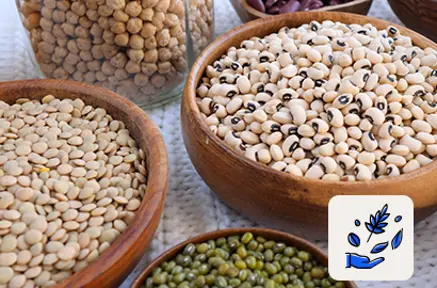What’s pushing plant-based boundaries?

Plant-based is everywhere today, including in the portfolio of leading dairy players. No wonder this category has been in the influx of continuous innovation. Matching the nutrient profile, especially protein, is among the top processing challenges in plant-based food and beverages. So, working with value-added benefits is the way forward for manufacturers aiming to offer more nutritionally balanced plant-based products.

plant-based products were launched in the UK in 2022
Source: Statista

Plant-based protein supplement sales in 2024
Source: Food manufacturer UK

product launches in 2022 contained plant-based protein
Source: prepared foods
Expanding the variety of plant-based proteins is crucial, with innovations in types, formats, and sources playing a key role. While traditional proteins are known for their versatility, a surge in innovative protein sources is now meeting the demands for new textures, flavors, and allergen-friendly options.
Timeless plant proteins
The most common traditional sources of plant-based proteins include soy, pea, wheat, and chickpeas, among others. Soy is known for its high protein content and versatility across foods and drinks, pea is popular for its high iron levels and ease of digestion, and chickpea, a popular plant-based ingredient is a versatile source that is often used in vegan cheese for its melting properties.

Wheat, on the other hand is an affordable ingredient, which is generally not thought of as a protein but seitan, or wheat gluten is a common ingredient in meat substitutes.
New proteins on the block
Emerging plant-based protein sources are key to innovation in this space, with their unique benefits and nutritional profiles. Mycoprotein, also known as mycelium or fungal protein, is a complete protein containing all nine essential amino acids. Duckweed, a fast-growing aquatic plant is the newest source with the potential to disrupt the industry as it is very high in protein and essential nutrients.

Yeast, an ingredient that one doesn’t associate with protein content is actually rich in B vitamins, protein, and minerals and is becoming popular because of the umami effect it offers. Another promising alternative that mimics the characteristics of cheese, including its protein content, is precision-fermented caseins.
The innovation ask
Apart from working with new sources, innovation in plant-based product development needs to address challenges in texture and mouthfeel as well as off-notes often associated with plant-based proteins. And all this needs to be done with minimal artificial additives as consumers increasingly look for clean-label products, made with simple, recognizable ingredients. This is where innovation in packaging can be a differentiator.
Want to know more? Download our exclusive report to get an in-depth view including insights from our in-house expert, Muhib Noor Rahman. In the next and final edition of this series, he talks about the top drivers in plant-based. Don’t miss the video interview - subscribe to our monthly newsletter to get the story in your inbox.

Expert take: Recipe for a plant-based future

What’s that ingredient in plant-based?

